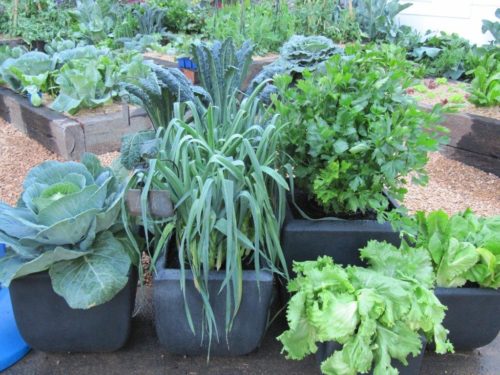
Gardening writer CEDRIC BRYANT has veggie-growing tips for unit-dwellers with a balcony.
AT present it’s almost like we’re following the wartime “Dig for Victory” campaign.
During World War II, supplies were desperately short, with boats bringing food to Britain continually being sunk by German U-boats. The government encouraged every person, from those with a large garden to a small patch, to grow vegetables. Lawns and flower beds were dug up and turned over for this purpose. Now we’re faced with a similar challenge, though with more people living in units.

It doesn’t matter how many storeys up you are, if you have a balcony that gets five to six hours of sunlight a day, you can grow vegetables in containers. Herbs are usually the first to be suggested but these have a limited use compared with other veggies such as carrots, silverbeet and English spinach. Expensive pots aren’t needed, unless preferred. One of the easiest and lightest are the polyurethane containers available at local supermarkets, if you ask. These boxes are used to deliver fruit and veggie supplies from wholesalers or growers.
Line the bottom of these poly containers with a piece of shade cloth or flywire gauze. Next, use a potting mix that costs about $12 a bag; rather than the cheaper $4-$5. Raise the container up slightly for drainage on pieces of old tiles or timber. While you can grow from seed, and indeed it’s the only way with some veggies such as broad beans, seedlings will yield quicker results.
Watering regularly is essential, as is feeding. I recommend certified organic plant foods rather than chemical fertilisers. Harking back to the war years again, the British government commissioned two chemists to recommend a safe fertiliser and they came up with using seaweed from the North Sea, which is still the basis for Multicrop organic plant food. As well as improving plants’ general health, it may reduce the effect of frost, and promotes root growth. Multicrop has now released its new Maxicrop “Slow Release Organic Fertiliser” pellets, feeding plants for up to three months.
HENRY VIII’s flagship the “Mary Rose”, which sank in battle in 1546, was raised from the English Channel in 1982 and is now on display in Portsmouth Harbour. More than 30,000 artifacts were recovered from the wreck, including a great variety of fruit stones. Interestingly, with plums, the stone of each variety is unique. I had estimated that around 33 varieties of plums were grown in the 1600s, but I was way off. It was possible to determine virtually the last meal of the hundreds of sailors who drowned. They must have been great fruit eaters, for more than a staggering 100 varieties of plum stones were excavated!
STUCK at home and have a garden, however tiny? Try spending as much time eating and drinking as you do working out there. In a larger garden, walk around and enjoy it, without compulsively weeding and tidying up. Try not to think about making new beds, and just look after what you’ve got. How long is it since you sat and read a book in the garden?
Who can be trusted?
In a world of spin and confusion, there’s never been a more important time to support independent journalism in Canberra.
If you trust our work online and want to enforce the power of independent voices, I invite you to make a small contribution.
Every dollar of support is invested back into our journalism to help keep citynews.com.au strong and free.
Thank you,
Ian Meikle, editor




Leave a Reply